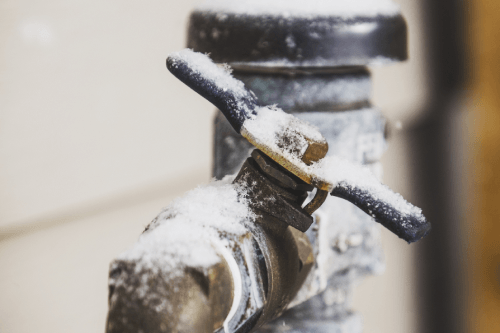Tips to Avoid Frozen Pipes in Cold Weather: Professional Tips
Tips to Avoid Frozen Pipes in Cold Weather: Professional Tips
Blog Article
The writer is making a few good pointers related to Helpful Tips to Prevent Frozen Pipes this Winter in general in this post down below.

Winter can damage your pipes, specifically by freezing pipelines. Below's how to prevent it from taking place and what to do if it does.
Introduction
As temperatures decline, the threat of icy pipes increases, potentially resulting in expensive repair services and water damage. Recognizing how to avoid icy pipes is crucial for house owners in cool climates.
Avoidance Tips
Shielding prone pipes
Wrap pipelines in insulation sleeves or use warm tape to safeguard them from freezing temperature levels. Concentrate on pipelines in unheated or exterior areas of the home.
Home heating methods
Keep indoor spaces sufficiently heated, particularly locations with pipes. Open up cabinet doors to permit warm air to circulate around pipes under sinks.
How to recognize icy pipes
Try to find lowered water flow from taps, uncommon smells or noises from pipelines, and visible frost on subjected pipelines.
Long-Term Solutions
Structural modifications
Take into consideration rerouting pipes far from outside walls or unheated locations. Add additional insulation to attics, cellars, and crawl spaces.
Upgrading insulation
Buy high-grade insulation for pipes, attics, and walls. Appropriate insulation helps keep consistent temperature levels and reduces the threat of icy pipelines.
Securing Outside Pipes
Garden hose pipes and exterior taps
Detach and drain pipes garden hose pipes prior to winter. Mount frost-proof spigots or cover outdoor taps with shielded caps.
Comprehending Frozen Pipelines
What creates pipelines to freeze?
Pipes ice up when exposed to temperature levels listed below 32 ° F (0 ° C) for prolonged periods. As water inside the pipelines ices up, it expands, taxing the pipe wall surfaces and potentially triggering them to break.
Risks and problems
Frozen pipelines can bring about supply of water disruptions, home damages, and expensive repair work. Ruptured pipelines can flood homes and create comprehensive structural damage.
Indicators of Frozen Water Lines
Recognizing frozen pipes early can stop them from rupturing.
What to Do If Your Pipes Freeze
Immediate actions to take
If you believe icy pipes, keep taps available to eliminate pressure as the ice thaws. Use a hairdryer or towels soaked in hot water to thaw pipes gradually.
Final thought
Preventing frozen pipes needs aggressive procedures and fast reactions. By understanding the reasons, signs, and preventive measures, homeowners can protect their plumbing throughout cold weather.
6 Proven Ways to Prevent Frozen Pipes and Protect Your Home
Disconnect and Drain Garden Hoses
Before winter arrives, start by disconnecting your garden hoses and draining any remaining water. Close the shut-off valves that supply outdoor hose bibs and leave the outdoor faucet open to allow any residual water to drain. For extra protection, consider using faucet covers throughout the colder months. It’s also important to drain water from any sprinkler supply lines following the manufacturer’s directions.
Insulate Exposed Pipes
Insulating your pipes is an effective way to prevent freezing. Pipe insulation is readily available at home improvement stores and is relatively inexpensive. Pay close attention to pipes in unheated areas such as the attic, basement, crawl spaces, or garage. Apply foam insulation generously to create a buffer against the cold. You can also wrap your pipes in heat tape or thermostat-controlled heat cables for added warmth.
Seal Air Leaks
Inspect your home for any cracks or openings that could let in cold air. Seal any holes around the piping in interior or exterior walls, as well as the sill plates where your home rests on its foundation. Additionally, make sure to keep your garage door closed unless you’re entering or exiting. Leaving it open creates a significant air leak that can lead to frozen pipes.
Allow Warm Air Circulation
During cold snaps, it’s essential to allow warm air to circulate evenly throughout your home. Leave interior doors ajar to promote better airflow. Open kitchen and bathroom cabinets to help distribute heat consistently around the rooms. If you have small children or pets, be sure to remove any household chemicals or potentially harmful cleaners from open cabinets for safety.
Let Faucets Drip
A small trickle of water can make a big difference in preventing ice formation inside your pipes. When temperatures drop significantly, start a drip of water from all faucets served by exposed pipes. This continuous flow helps prevent the water from freezing. Additionally, running a few faucets slightly can relieve pressure inside the pipes, reducing the chances of a rupture if the water inside does freeze.
https://choateshvac.com/6-proven-ways-to-prevent-frozen-pipes-and-protect-your-home/

I stumbled upon that blog entry about How To Avoid Freezing Pipes when looking around the web. Liked our entry? Please share it. Let another person locate it. Thanks so much for your time spent reading it.
Call Today Report this page